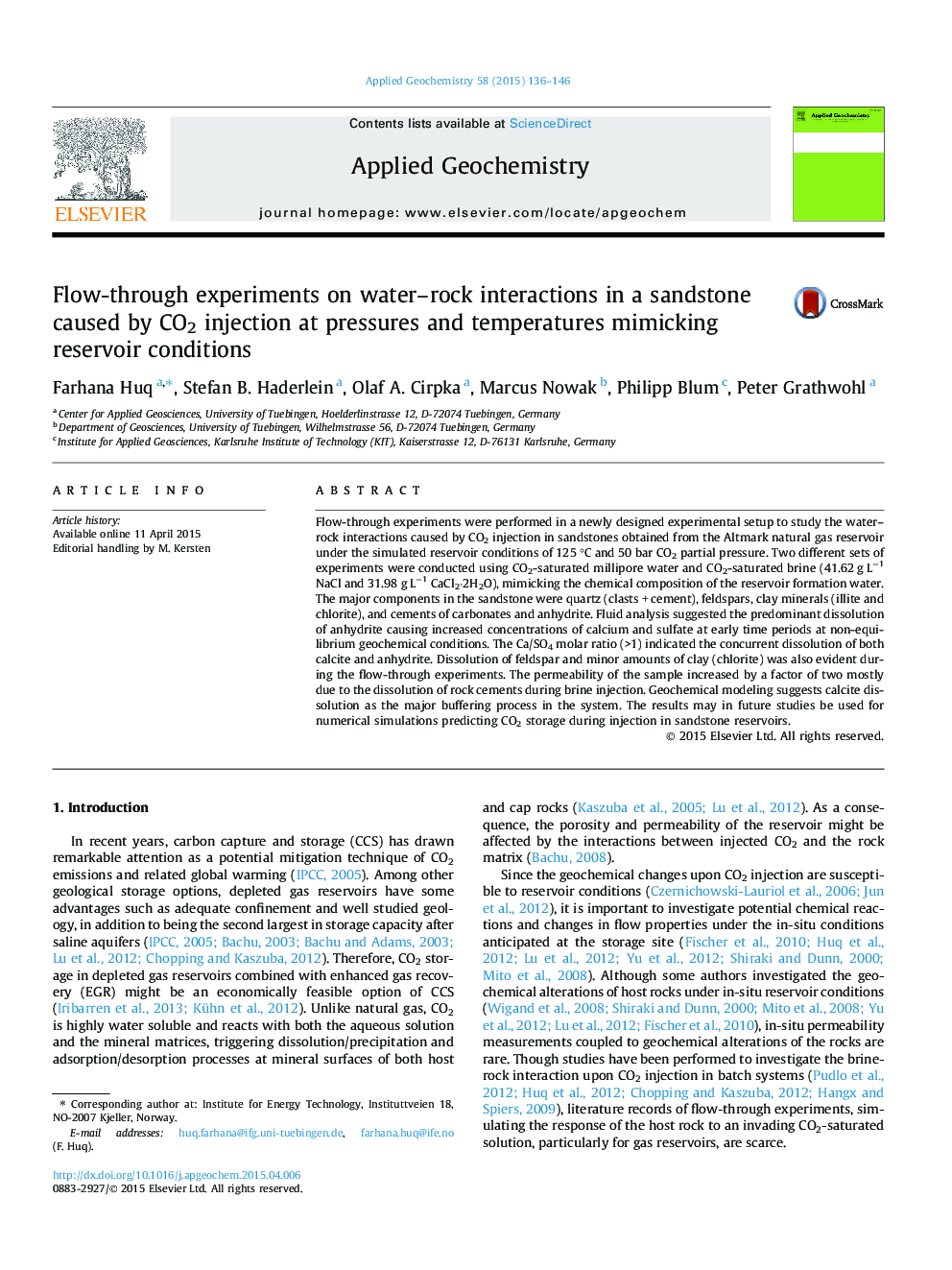| کد مقاله | کد نشریه | سال انتشار | مقاله انگلیسی | نسخه تمام متن |
|---|---|---|---|---|
| 4435660 | 1620233 | 2015 | 11 صفحه PDF | دانلود رایگان |

• Altmark sandstone showed CO2-induced fluid–rock interactions under in-situ conditions.
• Dissolution of anhydrite and calcite cements was inferred from fluid analysis.
• Sample permeability increased by a factor 2.
Flow-through experiments were performed in a newly designed experimental setup to study the water–rock interactions caused by CO2 injection in sandstones obtained from the Altmark natural gas reservoir under the simulated reservoir conditions of 125 °C and 50 bar CO2 partial pressure. Two different sets of experiments were conducted using CO2-saturated millipore water and CO2-saturated brine (41.62 g L−1 NaCl and 31.98 g L−1 CaCl2·2H2O), mimicking the chemical composition of the reservoir formation water. The major components in the sandstone were quartz (clasts + cement), feldspars, clay minerals (illite and chlorite), and cements of carbonates and anhydrite. Fluid analysis suggested the predominant dissolution of anhydrite causing increased concentrations of calcium and sulfate at early time periods at non-equilibrium geochemical conditions. The Ca/SO4 molar ratio (>1) indicated the concurrent dissolution of both calcite and anhydrite. Dissolution of feldspar and minor amounts of clay (chlorite) was also evident during the flow-through experiments. The permeability of the sample increased by a factor of two mostly due to the dissolution of rock cements during brine injection. Geochemical modeling suggests calcite dissolution as the major buffering process in the system. The results may in future studies be used for numerical simulations predicting CO2 storage during injection in sandstone reservoirs.
Journal: Applied Geochemistry - Volume 58, July 2015, Pages 136–146